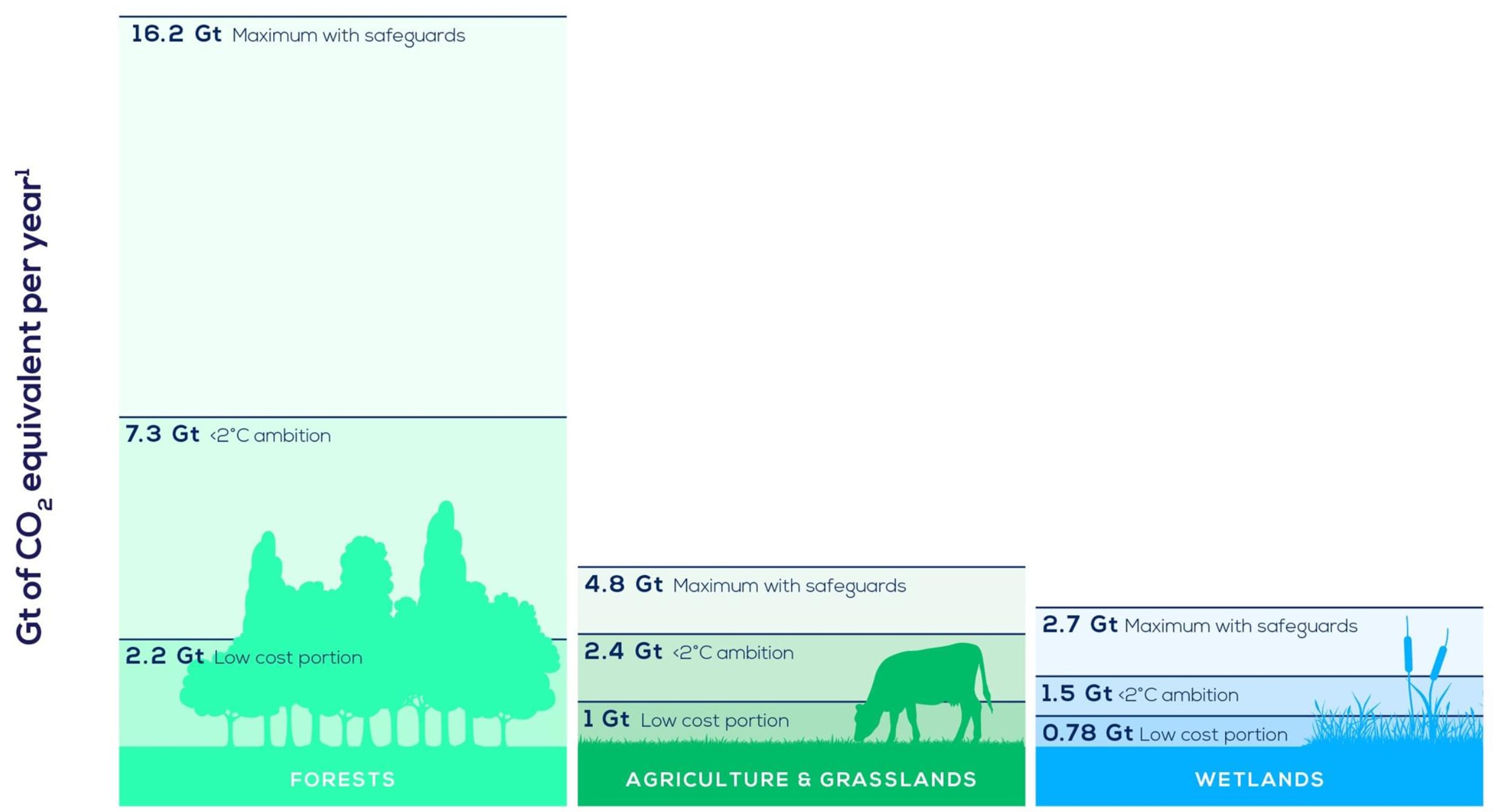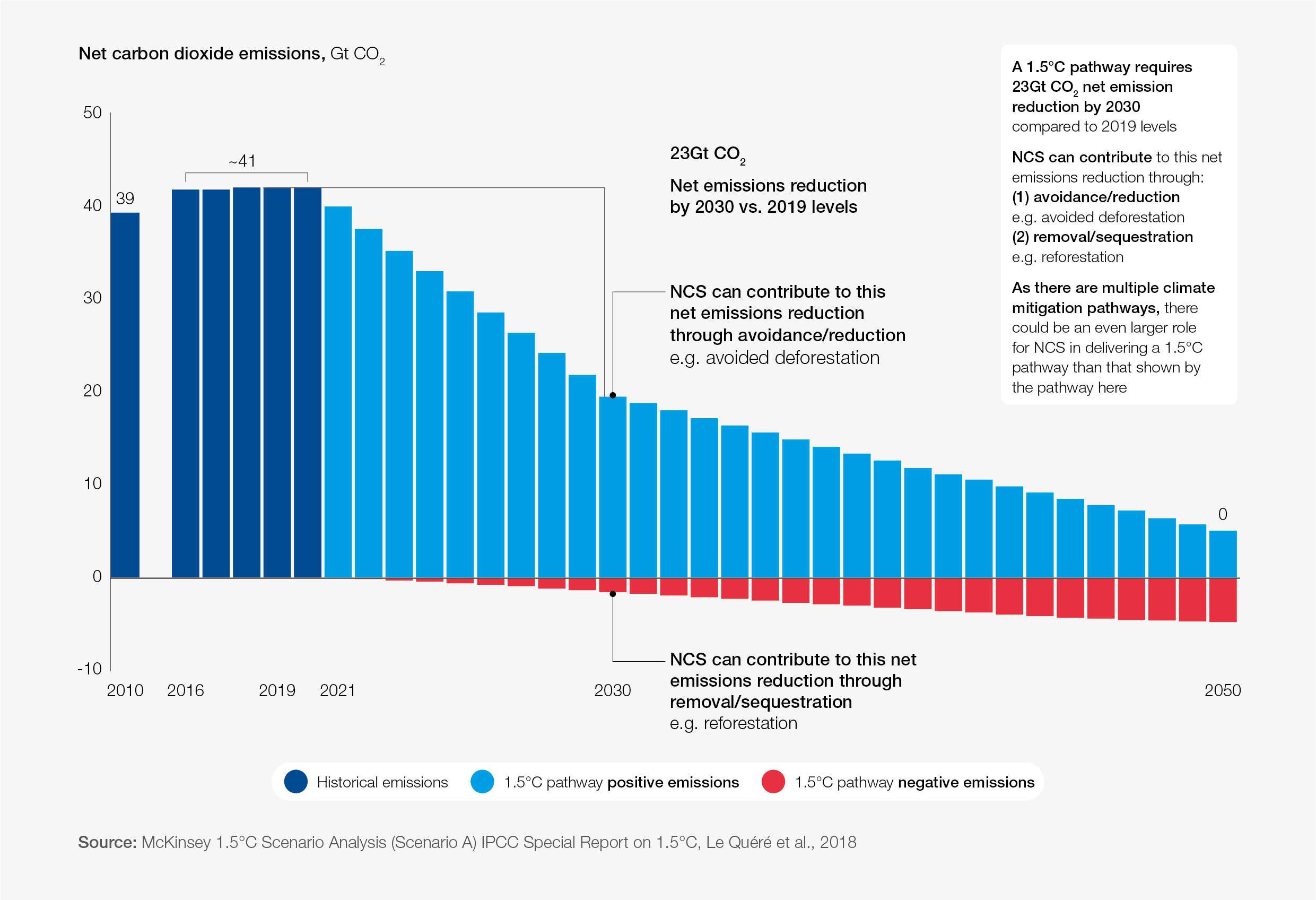From forests to futures: how Natural Climate Solutions are changing lives around the world

Image: Pixabay
Giulia Carbone
Director, Natural Climate Solutions Alliance, World Business Council for Sustainable Development (WBCSD)
Get involved with our crowdsourced digital platform to deliver impact at scale
Stay up to date:
Climate and Nature
- Natural Climate Solutions (NCS) combat climate change, biodiversity loss, and inequity.
- Community co-ownership ensures long-term success, seen in projects aimed at protecting some of the world's most vulnerable forests.
- Scaling up NCS is vital to reaching global climate and nature goals, with trust and transparency being key elements for success.
As the world grapples with climate change, biodiversity loss and inequity, natural climate solutions (NCS) projects are a powerful way to create positive environmental, economic and social impacts. NCS projects are aimed at the conservation, restoration and improved management of land in order to increase carbon storage or avoid greenhouse gas (GHG) emissions. NCS can provide around 30% of the emissions reductions needed to limit global warming to 1.5°C by 2030.
Through well-designed revenue and benefit sharing agreements, NCS projects can, among other benefits, deliver greater access to healthcare and clean water, better education and job opportunities, as well as enhanced gender equality.
Co-ownership by local communities
In high-quality NCS projects, community members are co-creators and co-owners, a key factor in ensuring long-term conservation. At the Keo Seima Wildlife Sanctuary in Cambodia, 20 different local communities are part of initiatives like the Cash-for-Community program. Here, communities direct funds towards self-selected projects in education, healthcare or income-generating activities. This approach builds local institutions and promotes more equitable growth.
“These consultations actively involve the community in decision-making,” said Rithiny Teng, Director of Policy and Development Program at Wildlife Conservation Society (WCS) in Cambodia. “It has translated into strong community support – which is crucial.”
Landowners in the Laguna Om project in Mexico’s Yucatan Peninsula are partners in climate action, helping to design interventions done on their land.
“The goals that we have with these communities can only be achieved with long-term commitments because they are the only ones that can ensure that the carbon will stay sequestrated in the ecosystems for a very long time,” said Lucero Hidalgo García, Operations Manager with project developer Toroto.
What is the World Economic Forum doing on natural climate solutions?
Towards more sustainable livelihoods
When landowners receive the greatest proportion of the benefits from the sale and purchase of carbon credits, it provides an economic incentive that is a powerful deterrent to environmentally destructive practices such as tree felling for charcoal production or clearing for farmland.
Communities are incentivized to not only safeguard their lands, but also improve their quality of life by conserving and protecting natural resources. For example, a training centre and processing facility for coconut sugar at the Katingan Mentaya peatland rainforest restoration project in Indonesia has helped coconut farmers produce goods that they can sell for three times the price of fresh fruit. Here, an agro-ecology school teaches regenerative agriculture practices.
“This is not a donor-funded philanthropic model. For conservation to work at this scale, it needs to be financially sustainable,” says Dharsono Hartono, chief executive of the Katingan Mentaya Project. “Communities are our partners. We own this together. We save the forest together and we benefit together.”
On Guatemala’s Caribbean coastline, the Conservation Coast project has introduced over 10,000 activities fostering biodiversity, conservation and sustainable community development. In Peru, the Nii Kaniti rainforest protection project has boosted incomes for over 350 men and women working on 18 sustainable enterprises.
How is the World Economic Forum fighting the climate crisis?
Improving outcomes for women and girls
For underrepresented groups such as women and youth, NCS projects can have particular benefits. For example, the Conservation Coast project has established over 14 women’s clinics across the Caribbean focused on maternity health and sexual and reproductive health. Here, a scholarship program for girls is enabling them to finish secondary school. The Katingan Mentaya project has a flourishing women-run plant nursery while the Nii Kaniti and the Conservation Coast projects are creating more jobs for women.
Better access to health, education and basic services
Investing project funds in social, educational and health programs has led to greater access to clean water, and improved electricity infrastructure and healthcare. In Keo Seima, thousands more residents have access to clean water and quality healthcare. Investments in education are also reducing poverty rates.
Have you read?
Restoring land rights for Indigenous communities
Land ownership incentivizes conservation so that land is preserved for generations to come.
Indigenous communities in the Keo Seima project are securing legal tenure and management rights to ancestral lands. The Conservation Coast project is working to legalize over 7,500 hectares of community land for Indigenous communities. Similarly, Nii Kaniti is a collaboration between seven Indigenous communities building a thriving forest economy deep in the Amazon where 127,000 hectares of critically threatened ancestral land is being protected.
“Nii Kaniti places indigenous people at the heart of decision-making to decide how climate finance will be used to deliver the most transformative outcomes for their families and within a landscape they’ve called home for generations,” says Marioldy Sánchez Santivañez, head of Project Management for project developer AIDER.
Critical need to scale the NCS approach
These examples are encouraging but more needs to be done. “We need to move bigger and faster from the demand side and also on the side of governments and private investors. We are seeing the impact of climate change every day and we have to move faster to save these forests,” said Marco Cerezo, the General Manager of project developer FUNDAECO.
The voluntary carbon market makes it possible for communities and projects in some of the most endangered forests to access capital directly and channel funds where they are most needed. In this way, carbon credit projects are not just another abstract financial instrument but a vital conservation and development tool.
Businesses increasingly implementing science-based carbon reduction targets may need to purchase credits to reach net-zero targets. By implementing rapid decarbonization actions alongside the acquisition of high-quality NCS credits, businesses can contribute to a nature-positive and more equitable future.
Trust is the most important ingredient for successful NCS projects, says Hartono of the Katingan Mentaya Project. “It’s essential to build social capital and community ownership of the project. The key is to be transparent and accountable for everything you do.”
To learn more about nature-based credits and the voluntary carbon market please visit www.naturalclimatesolutionsalliance.org
Don't miss any update on this topic
Create a free account and access your personalized content collection with our latest publications and analyses.
License and Republishing
World Economic Forum articles may be republished in accordance with the Creative Commons Attribution-NonCommercial-NoDerivatives 4.0 International Public License, and in accordance with our Terms of Use.
The views expressed in this article are those of the author alone and not the World Economic Forum.
The Agenda Weekly
A weekly update of the most important issues driving the global agenda
You can unsubscribe at any time using the link in our emails. For more details, review our privacy policy.
More on Nature and BiodiversitySee all
Lisa Donahue and Vance Scott
April 28, 2024
Dan Lambe
April 24, 2024
Roman Vakulchuk
April 24, 2024
Charlotte Kaiser
April 23, 2024
Jennifer Holmgren
April 23, 2024








